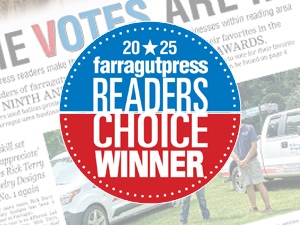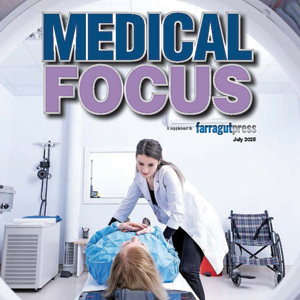Traffic calming in Thornton Heights big BOMA topic; ‘homework’ a need
Traffic calming concerns in the Thornton Heights subdivision sparked discussions among Farragut Board of Mayor and Aldermen members, during their meeting Thursday, April 10, of whether they should revise their current policy.
“I’d like to see a change in the policy, specifically in the parental responsibility zones, that would allow neighborhoods to request speed-calming measures without the need of a speed study,” Alderman Drew Burnette said.
“We’ve got to make cut-throughs uncomfortable,” he added.
“I’m perfectly fine with slowing down the traffic in the parental responsibility zone,” Vice Mayor Scott Meyer said. “If we do a different zone for the parental responsibility zone, it makes sense.”
“I think we’ll have to do some homework on our end to come up with a modified policy,” Town administrator David Smoak said. “Basically, what I’m hearing is look at the PRZ, probably lower the threshold for the speeding that is occurring in the neighborhood.”
However, “another question might be: if it doesn’t meet those thresholds, will you still be Ok with the neighborhood having a vote?” he asked.
Another issue then arose: There are no sidewalks in the neighborhood that is, for the most part, a parental responsibility zone, which is determined by measuring the shortest route from a student’s residence to bus drop-off locations.
“That’s a big issue,” Mayor Ron Williams said about the lack of sidewalks. “We need to look at what we need to do sidewalk-wise because a lot of these streets, when you look at them, are quite narrow.
“I think it’s time to start looking at the zone and start looking at what we can do … so kids are on the sidewalks and not on the streets,” he added.
“It’s been the policy of the Town to try to put sidewalks in these parental responsibility zones,” Smoak said.
“The Town of Farragut has had a traffic-calming policy for roughly 20 years now,” he added. “It was last updated in May 2023.
“The Engineering team follows the policy whenever there’s a request from neighborhoods or areas in Town when speeding is an issue … to see whether or not there are warrants that are met in order to move forward with any traffic-calming measures.”
Eric Schindler, assistant Town engineer, explained why the Thornton Heights area did not meet the policy’s warrants.
“Right now, the only initial disqualification comes from road classifications,” he said. “Only local streets and local collectors with greater than 50 percent residential frontage are eligible.
“The current threshold that we use for eligibility for traffic calming is when an 85th percentile speed of greater than 10 miles per hour over the posted speed limit is seen,” Schindler added.
“We’ve done three studies in Thornton Heights, starting in 2016-2017,” when the focus was Thornton Drive, where speed cushions subsequently were installed.
In 2024, “We had a request for the remainder of the subdivision, so we did studies everywhere else in the subdivision,” Schindler said. “At that time, we didn’t see any evidence of speeding.”
Earlier this year, Schindler said the Engineering team did a follow-up study to compare it to the 2024 study.
“We wanted to see if there was any change in traffic flow,” he said. “It looks like a majority of the vehicle traffic that’s generated through the subdivision is not generated from Concord-Thornton; it’s generated elsewhere in the subdivision.
“Roads with the highest daily traffic were Hughlan Drive — between Towne and Concord (roads) – Loudon Road and Thornton Drive — between Roane Drive and Kingston Pike,” Schindler added.
Based on the average daily traffic of Thornton Drive and Hughlan, “it can be inferred a majority of any cut-through traffic comes via Towne Road, Loudon Road and Thornton Drive between Roane Drive and Kingston Pike,” he said.
However, Schindler said the traffic studies showed no evidence of any significant change “even with the installation of speed cushions on Thornton Drive.”
“I think you guys did a good job on this,” said Mayor Ron Williams, but he questioned the results since the neighborhood is a school zone area.
“Should we be more concerned about the speed that you have in that zone?” he asked. “You’ve got kids that are walking in the street now because there are no sidewalks, so should we look at it from the standpoint .... what the speed zone should be for an area (with) kids walking in the street as opposed to a blanket thing you’ve got now?”


